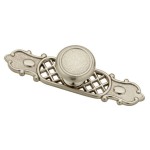How to Organize a Filing Cabinet: A Comprehensive Guide
Maintaining a well-organized filing cabinet is essential for efficient document management in any office or home environment. A disorganized filing system can lead to lost documents, wasted time, and increased frustration. This article provides a step-by-step guide on how to effectively organize a filing cabinet, ensuring easy retrieval of information and improved productivity.
Before embarking on the organizational process, it is crucial to gather the necessary supplies. These include file folders (both standard and hanging), labels, a label maker or pen, a trash can for discarding unwanted documents, and potentially a shredder for sensitive materials. Having these items readily available will streamline the process and minimize interruptions.
Step 1: The Purge and Preparation
The first step in organizing a filing cabinet is to remove all the contents. This allows for a complete assessment of what is being stored and provides an opportunity to eliminate unnecessary clutter. Place all the files onto a large, flat surface, such as a table or the floor. This provides ample space to sort and categorize the documents effectively.
Next, begin sorting through the documents. Discard any items that are outdated, irrelevant, or duplicated. Common examples include expired warranties, old utility bills (unless required for tax purposes), and duplicate copies of memos or reports. When in doubt, err on the side of discarding, especially if the information can be readily accessed electronically.
For documents that contain sensitive information, such as social security numbers, bank account details, or medical records, utilize a shredder to ensure secure disposal. This prevents identity theft and protects confidential data from unauthorized access. If a shredder is unavailable, consider securely blacking out the sensitive information before discarding the document.
Once the unwanted documents have been removed, clean the filing cabinet. Use a damp cloth to wipe down the interior surfaces, removing any dust or debris. Allow the cabinet to dry completely before replacing the files. This helps to maintain a clean and professional environment for document storage.
Examine the file folders. Discard any that are damaged, torn, or heavily worn. Replace them with new folders to ensure the files are properly protected and labeled. This also provides an opportunity to standardize the folder types and colors, which can further enhance organization.
Step 2: Establishing a Filing System
The most critical aspect of organizing a filing cabinet is establishing a logical and consistent filing system. Several options exist, each with its own advantages and disadvantages. The best system will depend on the nature of the documents being stored and the user's personal preferences. Common filing systems include alphabetical, chronological, numerical, and subject-based.
An alphabetical filing system is a straightforward and widely used method. Files are arranged in alphabetical order by name, subject, or client. This system is particularly effective for storing documents related to clients, vendors, or projects. For example, a law firm might organize client files alphabetically by last name. To implement this, carefully sort the remaining files alphabetically. Within each letter, arrange files in subcategories if needed. For instance, under "S," separate files for "Smith, John" and "Smithson Company."
A chronological filing system arranges documents in order of date. This system is suitable for records that need to be easily accessed based on time, such as invoices, contracts, or correspondence. To implement this, determine the relevant date for each document (e.g., the date of the invoice or the date of the letter). Arrange the files in chronological order, from oldest to newest. This is often used by accounting departments.
A numerical filing system assigns a unique number to each file. This system is often used in large organizations where confidentiality and security are paramount. A cross-reference index is typically maintained to link the file number to the corresponding name or subject. This system offers a high degree of control over document access. An example would be assigning patient ID numbers to medical records. If this system is chosen, create an index that links each number to the file's content. This index is crucial for locating files quickly.
A subject-based filing system categorizes documents by topic or subject matter. This system is ideal for organizing research materials, project files, or general reference documents. Examples include categories such as "Marketing," "Human Resources," or "Financial Statements." Sort documents into logical categories. Create main categories and subcategories as needed for clarity. For example, “Marketing” could be divided into “Advertising,” “Social Media,” and “Market Research."
Regardless of the chosen system, it is essential to maintain consistency. Once a system has been established, adhere to it strictly to prevent confusion and ensure easy retrieval of documents in the future. Changes to the system should be carefully considered and documented to avoid disrupting the overall organization.
Step 3: Labeling and Implementation
Clear and accurate labeling is crucial for the effectiveness of any filing system. Use a label maker or a pen with legible handwriting to create labels for each file folder. The labels should clearly indicate the contents of the folder, using concise and descriptive language.
When using an alphabetical system, the labels should include the name of the person, company, or subject in a consistent format. For example, always use "Last Name, First Name" for individual names to maintain uniformity. For a chronological system, the labels should include the date range of the documents within the folder. For example, "Invoices - January 2023 to June 2023."
For a numerical system, the labels should include the file number, as well as a brief description of the contents. This helps to quickly identify the file without having to consult the cross-reference index. For a subject-based system, the labels should clearly indicate the subject matter of the documents. For example, "Marketing - Advertising Campaigns." Ensure the labels are easy to read and consistently formatted. This includes using the same font, size, and alignment for all labels.
Place the labeled file folders into the filing cabinet in the correct order, according to the chosen filing system. Use hanging file folders to provide support and organization for the standard file folders. The hanging folders should be labeled with the main categories or sections of the filing system. For example, in an alphabetical system, the hanging folders could be labeled with the letters of the alphabet.
Leave some space in each folder to accommodate future documents. Overstuffed folders can be difficult to manage and can lead to lost or damaged files. Periodically review the contents of each folder and remove any unnecessary documents. This helps to maintain a manageable and organized filing system.
Consider color-coding the file folders to further enhance organization. This can be particularly helpful for a subject-based system. For example, all files related to marketing could be placed in blue folders, while files related to human resources could be placed in green folders. This visual cue can make it easier to locate specific files quickly.
Finally, develop a routine for maintaining the organization of the filing cabinet. Schedule regular intervals, such as weekly or monthly, to review the contents and ensure that new documents are filed correctly. This prevents the filing cabinet from becoming disorganized again and ensures that information is readily accessible when needed.
In addition to the physical organization, consider creating an electronic filing system to complement the paper-based system. Scan important documents and store them on a computer or cloud storage service. This provides a backup of the documents and allows for easy access from any location. Ensure that the electronic files are organized in a logical and consistent manner, mirroring the structure of the physical filing system.
By following these steps, anyone can effectively organize a filing cabinet and maintain a well-organized document management system. This leads to increased efficiency, reduced stress, and improved overall productivity.

File Cabinet Organization Tips Ho W To Organize A The Container Store

Iheart Organizing Filing Cabinet Organization

How To Organize Your Business File Cabinets

How To Organize A Filing Cabinet With S Wikihow

Filing Cabinet Organization How To Organize All Your Important Paperwork

Perfect File Cabinet Organization In 4 Simple Steps Joyful Derivatives

Filing Cabinet Organization How To Organize All Your Important Paperwork

File Cabinet Organization Organizing In Style Polished Habitat

Simple Steps To Get Your File Cabinet Organized With Free Printables

Iheart Organizing Filing Cabinet Organization








